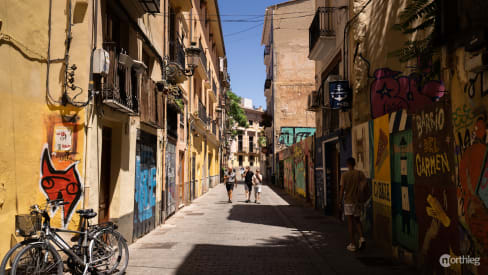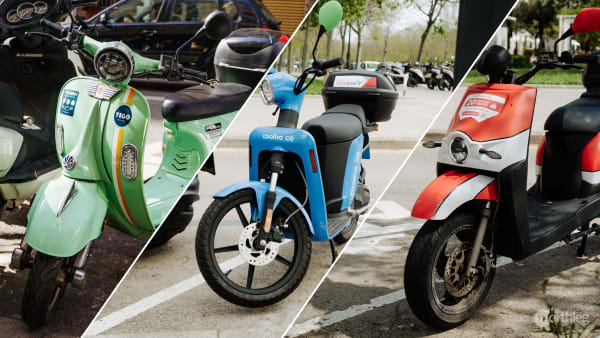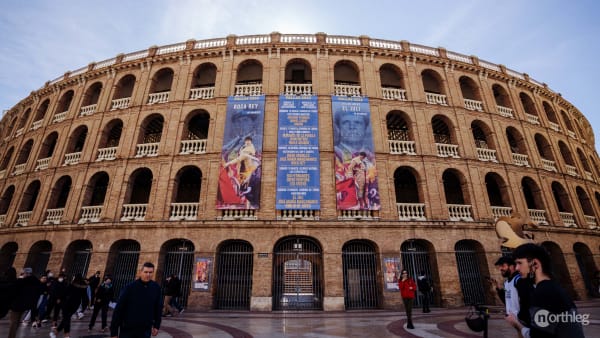The streets
The streets
In El Carme, it’s not just the churches, ancient buildings and museums that reveal Valencia’s past. This neighbourhood tingles with the thousands of stories that have taken place in its alleys, told in its squares, and woven into its walls.
.
Street art
While many buildings in Valencia display beautiful and elaborate artworks, the highest concentration of murals is in El Carme. Here, you can find amazing works of art that create unusual and striking sights, standing in contrast with their canvases, the walls of this barrio.
You’ll find art everywhere: on the old and crumbled walls, on the low ones in the unassuming and narrow streets, and on the large ones right next to important sights. Here urban art is abundant, and artists continuously put their talent to work, making this neighbourhood an open-air museum.
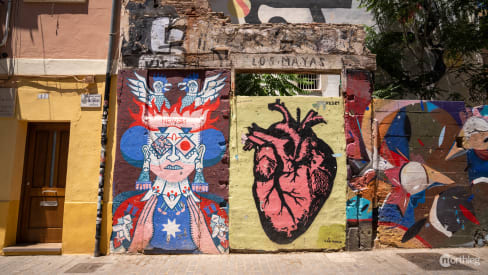
The temporary nature of this art form means that the murals are often replaced by the very active street art community, transforming the neighbourhood overnight. Locals appreciate the contribution that the pieces make to the city, commenting on society, politics, and local culture. This allows for the artists to work mostly undisturbed, even though graffitis are not officially permitted.
As you’re walking in the centre, make sure to walk down the smaller streets and alleys. You never know where you might find pieces of art or even the artists themselves at work.
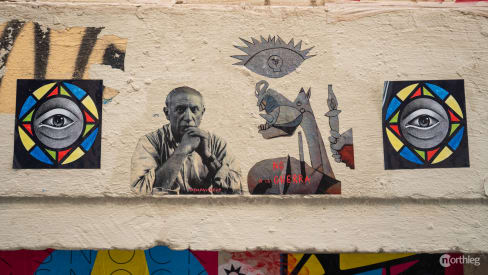
Plaza del Árbol
Where Calle Baja and Calle Santo Tomás converge (view map above) you’ll find a small square known as Plaza del Árbol (Tree Square). Although the olive tree you will find here is less than 100 years old, documents attest that the square has had a tree in it for more than 300 years.

The square is today the location of a bar, making it a meeting point for many in lively Valencia.
If you’d like to know more about the square, you can check out our article about it.
Plaza del Tossal
Plaza del Tossal, between El Carmen and El Mercat, is one of the places in Valencia where you can enjoy the laid-back and upbeat soul of the city (view map above).
This square, full of life, people, charming shops and bars, is one of the most appreciated spots for leisure and going out with friends. You can take a stroll around and choose from the numerous options in Plaza del Tossal. You’ll find plenty of places to drink, spend your evening, and dine.
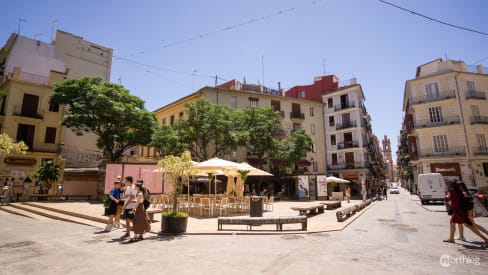
Underneath all this, is a part of Valencian history. Galería del Tossal is an underground gallery and exhibition centre. There, you’ll see the remains of a tower and a stretch of the 12th-century Islamic wall.
If you’d like to know more about the square, you can check out our article about it.
Plaza del Negrito
The Plaza del Negrito is the square of bohemians. When the sun is still high, you can enjoy a quiet afternoon in the square, with the relaxing gurgling and gentle splashing of the fountain. At night, the square becomes alive with bars and drinking.

The name of the place dates back to the 1850s when drinking water was brought to the city through numerous fountains.
One of the most important ones was installed here and adorned with a statue of a chubby boy standing over a bowl. The sculpture was made of dark metal, so people started calling it Plaza del Negrito.
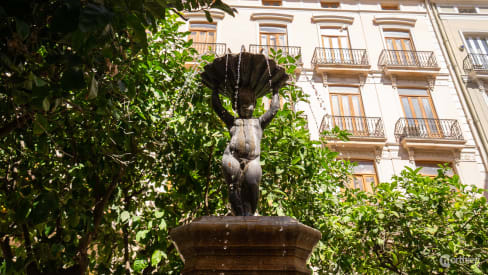
Plaza del Negrito is also between two neighbourhoods (El Carmen and La Seu). It isn’t far from the Cathedral of Valencia (view map above).
If you’d like to know more about the square, you can check out our article about it.
Mercat Mossén Sorell
This small and charming boutique market is one of the most modern ones in the city. Initially put up in 1932, it was recently (2008) rebuilt.
The harmonious concrete and iron structure and its large glass windows are perfectly nestled among the nearby houses and buildings of El Carmen. Mercat Mossén Sorell is a popular spot to drink and dine, savouring local wines, products, and tapas.
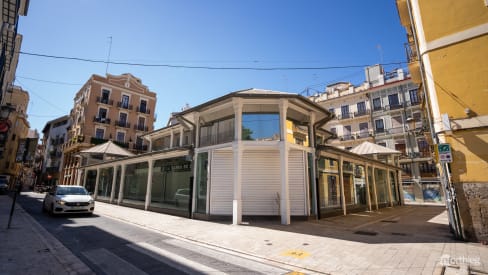
This market is in the heart of El Carmen, not far from Plaza del Tossal (view map above).
If you’d like to know more about this market, you can check out our article about it.
Casa de los Gatos
Casa de los Gatos, also known as La Gatera (Cat House) is a miniature house in Calle del Museo (view map above).
It consists of a three-story house façade painted in full detail on a street wall, a home for the cats of El Carmen.
The miniature looks like a perfect reproduction of a regular Valencian house: windows, balcony, tiled roof, water fountain, courtyard door, fire insurance plaque, and of course an entrance door with steps. This door, complete with a heraldic coat of arms, serves as an actual entrance for the local cats, which reside in the adjacent garden.

Above the fountain, next to the fire insurance plaque, you will also notice another ceramic panel, which reveals the origin and inspiration behind this piece. The inscription reads “In memory of the four cats that were left in Barrio del Carmen in 1094”. This refers to a popular story relating to Cid Campeador, a Catholic leader who conquered Valencia that year.
When El Cid entered the city, he found as many cats as there were citizens. He deemed that the animals were diabolical creatures and bearers of bad luck, so he ordered the execution of all cats in the city.
According to tradition, only four remained in the whole of Valencia after the event. It is these four cats that the Casa de los Gatos’ artist Alfonso Yuste Navarro honours with his sculpture.
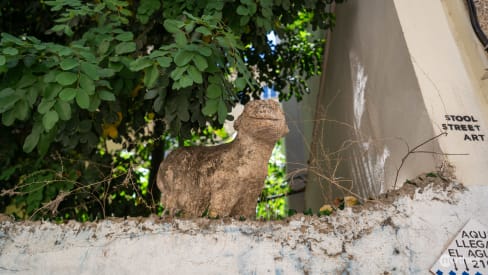
The Turia park
This is the serpentine urban garden, known as Jardín del Turia. Although not part of the neighbourhood proper, it hugs the northern part of El Carmen.
The park is almost 10 km long (about 6 miles) and provides a much-needed green space in the city. In it, you can find leisure areas, fountains, footpaths, bike lanes, open-air gyms, and sports pitches (including football and baseball).
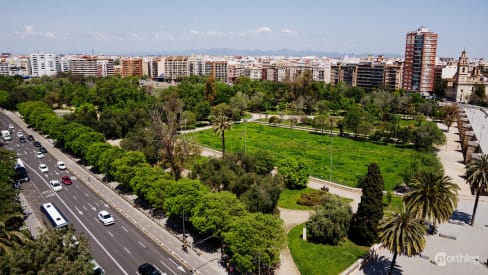
The garden is divided into 16 sections (tramos in Spanish), separated by various bridges that help pedestrians and vehicles alike cross to the other side. If you would like to know more about this park, you can check out our article about the Jardín del Turia.


